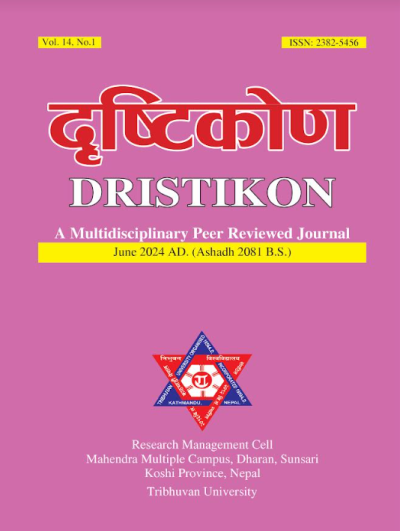Academic Stress among College Students
DOI:
https://doi.org/10.3126/dristikon.v14i1.66001Keywords:
stress, academic stress, students, adolescenceAbstract
Academic stress refers to the strain experienced by students, resulting in a state of distress that often manifests itself as various psychological and behavioral challenges. This research investigates into the pervasive issue of academic stress among college students, emphasizing its consequences and gender disparities. Employing a comprehensive mixed-methods approach, the study utilized a structured questionnaire to quantitatively assess academic stress level among selected students of a college using the Academic Stress Scale for College Students (ESSCS) that featured 16 items with six response choices. Findings indicated a notable gender difference in academic stress levels, highlighting the importance of addressing societal factors rather than inherent gender distinctions. Female students reported higher stress levels, emphasizing the need to address sources like pressure, anxiety, conflict, and frustration to improve their mental well-being. The study calls for collaborative efforts among educational institutions, parents, and educators to reduce workloads and implement innovative teaching methods, fostering divergent thinking and supporting diverse abilities. It serves as a call to action for institutions to prioritize students' mental health and create a more balanced and nurturing academic experience, advocating for a holistic approach to address the multifaceted challenges associated with academic stress.
Downloads
Downloads
Published
How to Cite
Issue
Section
License
© Research Management Cell, Mahendra Multiple Campus, Dharan

